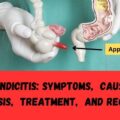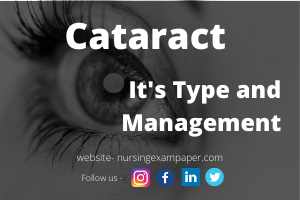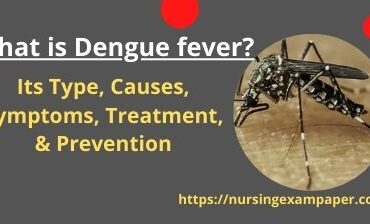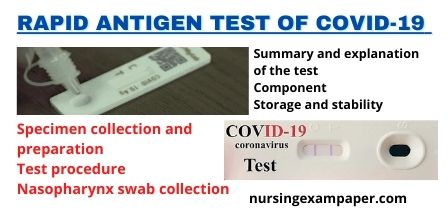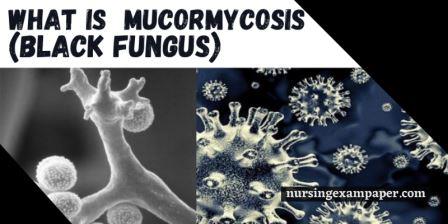What is Pain?
Pain is an unpleasant sensory and emotional experience associated with actual or potential tissue damage or described in terms of such damage.
International Association for the Study of Pain (IASP)
Because of the inherent subjective nature of pain, and the fact that the word “pain” itself connotes multiple meanings, the International Association for the Study of Pain (IASP) has established a standardized definition of pain.
The definition makes several important points:
- Pain is an unpleasant emotional experience as well as an unpleasant sensory experience. This distinction between the sensory aspects of pain and its emotional (or affective) component has had a significant influence on both research and the treatment of chronic pain.
- Also emphasized by the IASP in defining pain is that pain is always subjective. If patients regard their experience as pain and if they report it in the same ways as pain caused by tissue damage, it should be accepted as pain.
IASP Task Force on Taxonomy. In: Merskey H, Bogduk N, eds. Classification of Chronic Pain. 2nd ed. Seattle, Wash: IASP Press; 1994:209-214.
About Low Back Pain
- Extremely common
- Generally described as pain between the costal margin and the gluteal folds
- The leading cause of disability and loss of productivity
- The LBP has been shown to be the result of neuropathic as well as nociceptive pain mechanisms and has therefore been classified as a mixed pain syndrome
- Non-specific nociceptive pain is the result of an inflammatory response to tissue injury, while neuropathic pain describes somatic referred pain arising from the lumbar spine and/or nerve roots (radicular pain or radiculopathy).
- The multi factorial nature of chronic LBP has often been under-recognized and under-treated.
- Recent studies have demonstrated that approximately 20–55% of patients with chronic LBP have a 90% likelihood of a neuropathic pain component, and in an additional 28% of patients, a neuropathic pain component is suspected.
- The presence of a neuropathic pain component in LBP is associated with more severe pain symptoms
- LBP Affects QOL/ sleep/ PERFORMANCE
- Monotherapies have been reported of only limited efficacy, combining drugs with different mechanisms of action and targets appears a rational approach
Pain Research and Treatment Volume 2012, Article ID 154781,doi:10.1155/2012/154781
Type Of Low Back Pain (Depending On Duration)
- Acute :< 6 weeks
- Sub-acute : 6-12 weeks
- Chronic >12 weeks
Types Of Low Back Pain (Depending On Pathophysiology)
Causes Of Neuropathic Pain in LBP
- Mechanical nerve root compression from a herniated intravertebral disc {mechanical neuropathic root pain}
- Damage to local nerve fibers within a degenerated disc {local neuropathic pain}
- Effect of inflammatory mediators arising from a degenerated disc on nerve fibers {inflammatory neuropathic root pain}
- Repeated nociceptive stimuli can result in peripheral and/or central sensitization resulting in the transition from predominantly acute nociceptive to chronic pain with both nociceptive and neuropathic pain components.
Why LBP is important ?
- Low back problems account for more than 12 million visits to doctors each year.
- 8 out of 10 people will experience low back pain at some point in their lives
- low back pain results in more lost work days than any other physical affliction in persons under the age of 45
- Back pain not only affects adults but children as well
- Low Back Pain is the most common type of back pain due to the fact that the lower back supports the majority of your body weight.
What cause LBP
- Lack of exercise
- Poor posture
- Physical trauma
- Emotional stress
- Obesity
- Smoking
Where problem lies in LBP?
Structural Issues:
- Muscular
- Arthritic
- Disc
Psychological Issues:
- Emotional stress
Medical Issues
- Infections
- Inflammatory conditions
What are the symptoms of LBP ?
- Throbbing, aching, shooting, stabbing, dull or sharp pain
- Pain down one or both legs with very little pain in the lower back
- Numbness or weakness in the legs
- Pain down in the lower back & legs in certain positions such as standing or walking
- Sleep problems, decreased energy, depression, and anxiety
- Pain that stress and emotional issues causes or makes worse
Common Grounds Of LBP
Spinal Stenosis
- Spinal stenosis is an abnormal narrowing (stenosis) of the spinal canal that may occur in any of the regions of the spine.
- Spinal Stenosis is a medical condition in which the spinal canal narrows and compresses the spinal cord and/or exiting nerve roots. Stenosis is from the Greek word meaning “a narrowing”.
- Symptoms include pain, numbness, paraesthesia, and loss of motor control.
- The location of the stenosis determines which area of the body is affected.
- With spinal stenosis, the spinal canal is narrowed at the vertebral canal, which is a foramen between the vertebrae where the spinal cord (in the cervical or thoracic spine) or nerve roots (in the lumbar spine) pass through.
- There are several types of spinal stenosis: lumbar stenosis and cervical stenosis being the most frequent.
Lumbar Spinal Stenosis
Lumbar spinal stenosis results in low back pain and can radiate down the nerves into the hips, legs, thighs, feet or buttocks
Symptoms of Lumbar Spinal Stenosis
People with lumbar spinal stenosis typically feel one or more of the following sensations that radiate from the lower back into the legs:
- Pain
- Numbness
- Weakness
- Stiffness
- Dull cramping
- Uncomfortable tingling or pins-and-needles sensation
- Difficulty with balance
- The symptoms of lumbar spinal stenosis usually occur when patient stand up straight or walk—when patient’s back is in extension.
- Patient may feel relief by sitting or leaning forward—when Patient’s back is in a flexion position—because this can relieve compression of the nerves.
Lumbar Disc Herniation
The herniation or rupture of a lumbar disc occurs when the center or soft part of the disc bulges or ruptures through the outer, fibrous portion of the disc.
Also known as a slipped disc, this injury may occur when the ligaments surrounding the inter-vertebral disc become damaged or are weakened due to injury or from advancing age of the spine.
Radiculitis / Radiculopathy
- Radiculitis is from Latin radiculo for root plus itis for inflammation.
- Radiculopathy comes from the same Latin radiculo for root plus Greek pathos for suffering.
- In a radiculitis or radiculopathy the problem is at or near the root of the nerve along the spinal cord.
- The most common cause of this is a herniated or protruding spinal inter vertebral disc resulting in pain at that level of the spine in the neck or back
- The most severe symptoms may manifest along the course of the adjacent nerve root resulting in arm pain or leg pain through a process called referred pain or radicular pain.
Example
- nerve root impingement in the lower back or lumbar-sacral spine can be manifested with symptoms in the lower extremity, a lumbar radiculitis or lumbar radiculopathy.
- This can result in pain, weakness, numbness, or paresthesia in the butt, hip, leg or foot.
- This is often called sciatica or sciatic neuritis.
- Sciatica due to compression of a lumbar nerve root is one of the most common forms of radiculopathy.
LUMBAR RADICULOPATHY
LUMBAR RADICULOPATHY
Symptoms of Lumbar Radiculopathy
- Radiating pain
- Tingling or “pins and needles”
- Difficulty with control or movement of the leg
- Muscle weakness
Lumbar Spondylosis
- Lumbar spondylosis, describes bony overgrowths (osteophytes), predominantly those at the anterior, lateral, and, less commonly, posterior aspects of the superior and inferior margins of vertebral central (bodies).
- This dynamic process increases with, and is perhaps an inevitable concomitant, of age
- Lumbar spondylosis usually produces no symptoms. When back or sciatic pains are symptoms, lumbar spondylosis is usually an unrelated finding.
Spondylolisthesis
- Spondylolisthesis describes the anterior displacement of a vertebra or the vertebral column in relation to the vertebrae below.
- The term was coined from the Greek spondyl for vertebrae and olisthesis for slip.
- This finding often contributes to spinal stenosis, a narrowing of the spinal canal.
- The most common grading system categorizes severity based upon measurements on lateral X-ray of the distance from the posterior edge of the superior vertebral body to the posterior edge of the adjacent inferior vertebral body.
- This distance is then reported as a percentage of the total superior vertebral body length:
- Grade I is 0-25%
- Grade II is 25-50%
- Grade III is 50-75%
- Grade IV is 75-100%
Facet Syndrome
- This is a very common cause of LBP.
- The facets, also called the posterior joints, are interlocking joints of the spine that are highly innervated with nerves and receptors and are covered by a joint capsule.
- This is why they are common pain producing structures of the spine.
- The facet joint capsules are often sprained during flexion and torsional movements.
- The facet joints frequently become “impinged” or “locked up” and is commonly referred to as facet imbrication or facet impingement.
- Chiropractic manipulation is effective for this type of problem.
Pinched Nerve
- A pinched nerve occurs when too much pressure is applied for too long to a nerve by surrounding tissues—such as by bones, cartilage, muscles, tendons, ligaments, spinal discs or (rarely) tumor
- Physical pressure disrupts the nerve’s function causing pain, tingling, numbness or weakness.
- Too much pressure applied for too long to a nerve along the spine results in much the same sensations.
- The most common reasons for the direct physical pressure are as a result of the changes occurring with degenerative disc disease (DDD) and/or degenerative joint disease (DJD).
- Nerve pain resulting from direct physical pressure is called an entrapment neuropathy because the nerve is trapped or pinched by some structure.
Sciatica / Sciatic Neuritis / Sciatic Nerve Pain / Leg Pain
- Sciatica is a set of symptoms always including pain that is caused by general compression and/or irritation of one of five nerve roots that exit the lumbar spine and converge and give rise to the sciatic nerve that runs through the buttock muscles past the hip joint and into the thigh, past the knee, and on down into the calf, ankle, and foot to the toes.
- Sciatica is usually caused by the compression of lumbar nerve roots L4 or L5 or S1, but sometimes sacral nerve roots S2 or S3. Sciatica / Sciatic Neuritis
- The symptoms are felt in the lower back, buttock, hip and/or various parts of the leg and foot.
- In addition to pain, which is sometimes severe, there may be numbness, muscular weakness, pins and needles or tingling, and difficulty in supporting weight on the involved leg.
- These symptoms are primarily felt on one side of the body although not infrequently some lesser symptoms are also felt on the other side
Although sciatica is a common form of low back and leg pain, the true meaning of the term is often misunderstood. - Sciatica is a set of symptoms rather than a diagnosis for what is irritating the root of the nerve causing the pain.
- The most common diagnosis is degenerative disc disease (DDD) or degenerative joint disease (DJD).
- Sciatica may also be caused by pregnancy, primarily resulting from the direct physical pressure of the uterus pressing on the sciatic nerve, and, secondarily, from the muscular tension and/or vertebral compression consequent to carrying the extra weight of the fetus, and the postural changes inherent to pregnancy.
Clinical Diagnosis Of LBP
Imaging techniques useful in the Diagnosis of LBP
- X-Ray
- CT Scan
- MRI Scan
- Electro Myo Graphy (EMG)
Questionnaires To Distinguish Neuropathic & Nociceptive Components Of LBP
Diagnosis Of Neuropathic Component Of LBP
Clinical Diagnosis Of Neuropathic LBP
- Evaluation of neuropathic LBP includes: – medical history – review of systems in addition to a comprehensive physical and neurologic examination to exclude primary peripheral neuropathies
- The patient may report positive sensory symptoms such as tingling or burning pain and negative sensory symptoms such as numbness.
- Psychological comorbidity and psychosocial stressors should be assessed to ensure the formulation of an optimal treatment plan.
- Functional and quality-of-life assessment should be made to guide treatment goals.
Management of LBP
What are the general LBP treatment & their goals
Treatment
- Period of activity modification
- Perhaps medication to decrease pain and inflammation
- Complete inactivity is not advised for more than a couple of days
Goals of treatment
- Treat the cause
- Increased muscle strength
- Increased endurance
- Increased flexibility
- Improve aerobic fitness
Non Pharmacological Management of LBP
Physical Therapy & Exercise
Physical Therapy and Exercise
- Physical activity is often prescribed to improve function and relieve lower back pain and other symptoms of chronic Low back Pain.
Physical Activity Promotes Better Health in General
- Physical activity, even in the elderly, is recognized for improving mental and physical health.
- Lack of exercise may even contribute to heart disease and other health problems.
For some people lack of activity is also linked to depression.
In fact, depression is one of the most common problems for people with chronic pain.
Reduced Physical Activity Can Worsen Chronic Low back pain.
When exercise or even daily activities become painful, people become less active because their movement is limited. But, this can worsen pain by leading to weaker back muscles and poor posture
Role of Exercise in LBP Management
Exercise in ACUTE LBP:
- No studies have shown that it is effective for the treatment of ACUTE low back pain.
- Rationale:
- To prevent de-conditioning
- To reduce chance of recurrence
- To decrease the risk of the development of symptoms of chronic pain and disability.
Exercises in CHRONIC LBP
Results in positive outcomes
A combination of strengthening and flexibility exercises
Specific exercises treatment for LBP
- Postural training
- Lumbar stabilization
- Awareness of spine position and muscle contraction in various positions and with different activities
- Obtaining and maintaining mild abdominal contraction and multicity activation
- Stabilization exercises to establish motor patterns and build endurance
- Modifications for those in whom exercises aggravate pain
- Flexion exercises
- Extension exercises
- Aerobic activity
- Aquatic exercises
- Exercises after surgery
William’s Flexion Exercises
Pelvic tilt
Lie on your back with knees bent, feet flat on floor. Flatten the small of your back against the floor, without pushing down with the legs. Hold for 5 to 10 seconds
Single Knee to chest
Lie on your back with knees bent and feet flat on the floor. Slowly pull
your right knee toward your shoulder and hold 5 to 10 seconds. Lower the knee and repeat with the other knee.
Double knee to chest
Begin as in the previous exercise. After pulling right knee to chest, pull left knee to chest and hold both knees for 5 to 10 seconds. Slowly lower one leg at a time.
Partial sit-up
Do the pelvic tilt (exercise 1) and, while holding this position, slowly curl your head and shoulders off the floor. Hold briefly. Return slowly to the starting position.
Hamstring stretch
Start in long sitting with toes directed toward the ceiling and knees fully extended. Slowly lower the trunk forward over the legs, keeping knees extended, arms outstretched over the legs, and eyes focus ahead.
Hip Flexor stretch
Place one foot in front of the other with the left (front) knee flexed and the right (back) knee held rigidly straight. Flex forward through the trunk until the left knee contacts the axillary fold (arm pit region). Repeat with right leg forward and left leg back.
Squat
Stand with both feet parallel, about shoulder’s width apart. Attempting to maintain the trunk as perpendicular as possible to the floor, eyes focused ahead, and feet flat on the floor, the subject slowly lowers his body by flexing his knees.
LBP Exercises at a glance
Other Physical therapies
- Ultrasound and massage
- Water therapy
- Transcutaneous Electrical Nerve Stimulation (TENS)
- Traction
Surgery
- Surgery may be useful in those with a herniated disc that is causing significant pain radiating into the leg, significant leg weakness, bladder problems, or loss of bowel control
- It may also be useful in those with spinal stenosis
- In the absence of these issues, there is no clear evidence of a benefit from surgery
Pharmacological Management of LBP
Medications For LBP Management
- Analgesics
- Anti-inflammatories
- Muscle relaxants
- Anticonvulsants
- Anti-anxiety agents
- Antidepressants
Pain management – LBP
Non opioid analgesics
- Classed according to chemical characteristics (acid or non acid)
- All affect PG synthesis
- NSAIDs (e.g. acetylsalicylic acid, ibuprofen, diclofenac, naproxen)
- Selective COX-2 inhibitors
- Paracetamol
- Metamizole
NSAIDs
Mainly acting on nociceptive pain
Mechanism of action:
Inhibition of cyclooxygenase prostaglandin synthesis decreases
e.g. acetylsalicylic acid
Side-effects including:
Gastrointestinal irritation (erosions and ulcers)
Impaired renal function
Paracetamol
Paracetamol
- Aniline derivate
- Analgesic, antipyretic, no anti-inflammatory effects
- Risk of toxic liver damage
Mechanism of action
- Inhibition of central prostaglandin synthesis
- Believed to inhibit NO
- Not been fully explained
Maximum permisible dose
- 2.5gm/day
Side effects of traditional NSAIDs include
– Gastric toxicity
– Decreased platelet aggregation
– Renal & hepatic dysfunction
– Exacerbation of asthma
– Hyperkalemia
– Fluid retention
– Congestive heart failure
– Hypertension
– CNS symptoms
Facts to note
- Chronic users of NSAIDs are at 3 times greater risk for serious adverse GI events than non-users
- NSAIDs are responsible for an estimated 1,07,000 hospitalizations a year in US due to GI complications
- There are approximately 16,500 NSAID related deaths a year in US
- Patients at higher risk of GI ulcers include the elderly patients with a history of ulcers, those taking higher doses NSAIDs or concomitant steroids, and those with severe disability from arthritis or heart disease
Traditional NSAIDs
Limitations
- Use is largely for mild to moderate pain only
- Associated with GI bleeding & Ulceration that may be life threatening
- Antiplatelet effect may be undesirable/contraindicated in some patients (e.g. surgical patients)
- Associated with kidney impairment, increased blood pressure
- Numerous potential drug interactions
“Black box” warning on cardiovascular and gastrointestinal risk – NSAIDs
- “NSAIDs may cause an increased risk of serious cardiovascular thrombotic events, myocardial infarction, and stroke, which can be fatal,” the boxed warning states. “Patients with cardiovascular disease or risk factors for cardiovascular disease may be at greater risk.”
- The boxed warning will note that the CV risk “may increase with duration of use.”
- The boxed warning template further states that the products are “contraindicated for the treatment of peri-operative pain in the setting of coronary artery bypass graft (CABG) surgery
All NSAIDs may be linked to MI risk- BMJ 2005, Vol 330
- Drugs evaluated: selective NSAIDs : Rofecoxib, Celecoxib, other selcetive :Etoricoxib, Valdecoxib, Nonselective : Diclofenac, Ibuprofen
- Diclofenac and ibuprofen seem to pose about as much risk as the COX-2 inhibitor rofecoxib
- Patients taking Ibuprofen had 24% increased risk and who has been taking it for longer has higher. With Diclofenac- 55% increased risk.
Opioid analgesics
WHO classification
- Weak opioids (e.g. tramadol, codeine)
- Strong opioids (e.g. morphine, oxycodone, fentanyl)
Efficacy
- Mainly effective in nociceptive pain
- Only partially effective in neuropathic pain
Opioids
- Analgesics with morphine like activity
- Bind with ?, and ? receptors within the CNS
- Most opioids acts on ?1 in brain or ?2 in spinal cord or both
- Well accepted for use of opioids is in cancer pain & other chronic unremitting pain associated with life-threatening disease
- Also used on temporary basis in acute non-malignant pain
- Use in non-cancerous pain is less accepted because of the perceived risk of abuse
Ten step process: An algorithmic approach for long-term opioid therapy in
chronic pain (Eg – Low Back Pain)
Pain Physician Vol.9, No.1, 2006
Tramadol
- Tramadol is indicated in moderate to severe pain
- It has a dual, centrally acting mechanism of action
- Both tramadol and its active metabolite (M1) bind to mu-opioid receptor sites in the CNS, producing analgesia by blocking the release of neurotransmitters
- Unlike opioids, tramadol also inhibits the reuptake of serotonin and nor-epinephrine in the spinal cord
- These two mechanisms have been shown to act synergistically in animals and additively in humans to relieve pain
- Different from NSAIDs, tramadol does not inhibit prostaglandin synthesis
- Unlike conventional opioids, it has rarely been associated with respiratory depression
- Side effects are reduced if lower doses are used initially.
- Tramadol thus has a low abuse potential and is unscheduled, with no federal restrictions on prescribing
- In the management of acute and chronic pain analgesics from different groups are frequently combined
Benefits of combination of medications:
- By activating multiple pain inhibitory pathways, the combination analgesics can provide more effective pain relief for a broader spectrum of pain1
- Combining two analgesics with complementary mechanisms of action may enhance analgesia and at the same time reduce the risk of adverse events2
1.Journal of Clinical Pharmacology & Therapeutics 2001; 26:257-64
2.Drugs 2003; 63(11): 1079-86
Benefits of combination of tramadol and paracetamol
- More effective than plain tramadol in relieving acute pain
- Rapid pain relief only in 17 minutes as against 51 minutes with tramadol
- Median time of supplemental analgesia was 302 minutes as against 122 minutes with plain tramadol indicating a longer duration of action
- Better tolerated than plain tramadol with significantly less adverse events
Tramadol + paracetamol
Tramadol
- Centrally acting opioid analgesic, binds to µ opioid receptors
- Inhibits reuptake of NE and serotonin within pain pathways of CNS
- Contribute to enhancing the descending pain inhibitory pathways
Paracetamol
- Inhibits cyclooxygenase (COX) in central nervous system
- Proven efficacy in clinical settings involving central sensitization
Tramadol / Paracetamol In the management of LBP
Gary E. Ruoff. et .al
Clinical Therapeutics Volume 25, Issue 4, April 2003, Pages 1123–1141 Clinical Therapeutics Volume 25, Issue 4, April 2003, Pages 1123–1141
CONCLUSIONS
Conventional Tramadol capsules and the new Para/Tram combination were both highly effective in the treatment of nonspecific sub acute LBP. Although both medications were generally well tolerated, the 25% lower amount of tramadol in the Para/Tram combination considerably improved the tolerability (with reduced AE incidences) compared with T alone.
Other therapeutic options in pain management
- Antidepressants, anticonvulsants, many be employed adjunctly or as monotherapy for the relief of pain
- Most are administered orally
- The agent of choice varies with the type of pain
- There is generally a ceiling effect on analgesia of agents in this category, which varies from patient to patient
Tricyclic Antidepressants (TCA)
Example: Amitriptyline
Mechanism of action:
Inhibition of neuronal reuptake of noradrenaline and serotonin (5-HT)
Efficacy in pain:
- Neuropathic pain
- Complex regional pain syndrome
- Tension headache
Selective Serotonin and Noradrenaline Reuptake Inhibitors
Mechanism of action:
- Selectively inhibit reuptake of noradrenaline or serotonin or both
- Analgesia by intensifying descending inhibition
- SSRIs less analgesic than SSNRIs
No affinity to adrenergic, cholinergic or histaminergic receptors
Fewer side effects than TCAs
Side effects (e.g. Duloxetine)
e.g. nausea, vomiting, constipation, somnolence
Anticonvulsants
Different mechanisms of action
Common features: inhibition of neuronal excitation and stabilization of nerve membranes
Examples:
Carbamazepine: blocks Ca2+ and Na+ channels
Pregabalin: Ligand of Ca2+ channel ?2? sub-unit in brain and spinal cord; modulates calcium influx to reduce neurotransmitter release (including glutamate, substance P)
Side-effects:
e.g. sedation, dizziness, ataxia, peripheral oedema, nausea, weight increase
Topical analgesics
Main categories of topical analgesics include:
Rubefacients: traditional formulations based on salicylate and nicotinate esters, capsaicin and capsicum extracts and derivatives
NSAIDs: diclofenac, felbinac, ibuprofen, ketoprofen, piroxicam, naproxen, flurbiprofen and other NSAIDs
Miscellaneous group: including benzydamine, mucopolysaccharide polysulphate, salicylamide and cooling sprays
Take Home Messages
- LBP is a Mixed Pain Syndrome.
- Have both Nociceptive and Neuropathic Components.
- Mechanical Nerve Root compression, Damage of local nerve, Inflammation, Peripheral and/or Central sensitization are the major underlying causes for neuropathic component of LBP.
- Monotherapies have been reported of only limited efficacy, combining drugs with different mechanisms of action and targets appears a rational approach
Dr. Rahul Garg
Senior Consultant Orthopaedic,
Spine and Joint Replacement Surgeon

